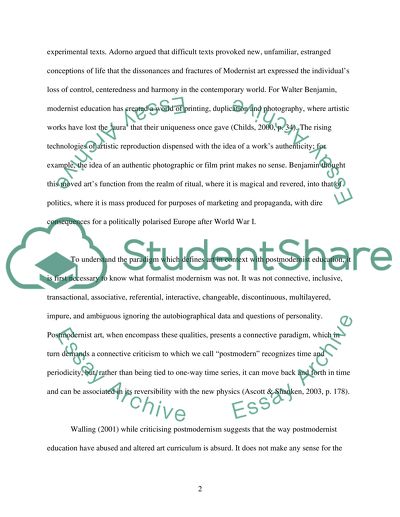Cite this document
(“FROM MODERNISM TO POSTMODERNISM IN ARTS EDUCATION Essay”, n.d.)
Retrieved from https://studentshare.org/miscellaneous/1511730-from-modernism-to-postmodernism-in-arts-education
Retrieved from https://studentshare.org/miscellaneous/1511730-from-modernism-to-postmodernism-in-arts-education
(FROM MODERNISM TO POSTMODERNISM IN ARTS EDUCATION Essay)
https://studentshare.org/miscellaneous/1511730-from-modernism-to-postmodernism-in-arts-education.
https://studentshare.org/miscellaneous/1511730-from-modernism-to-postmodernism-in-arts-education.
“FROM MODERNISM TO POSTMODERNISM IN ARTS EDUCATION Essay”, n.d. https://studentshare.org/miscellaneous/1511730-from-modernism-to-postmodernism-in-arts-education.


